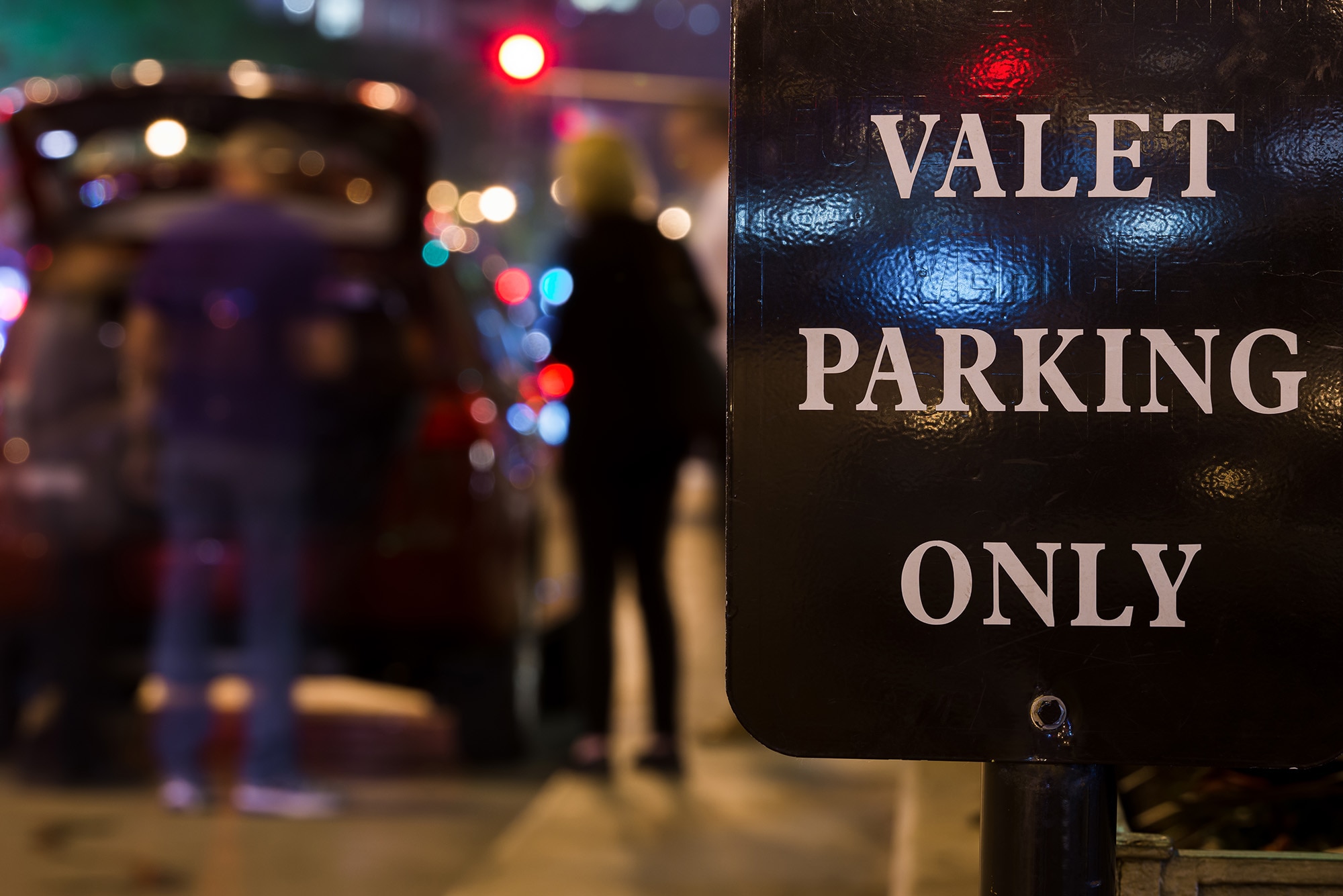3 Things to Do Before Valeting Your Car
These steps can help protect your vehicle and its contents from theft or damage.
 Getty Images
Getty Images
Handing over the keys to one of the most expensive items you own can require a leap of faith when you pull up to a valet stand. The potential for your car to be crashed, scratched, or even stolen is real. In fact, city police departments in several states have issued warnings about a spike in luxury-vehicle thefts from valet stands at restaurants, hotels, and parking lots.
Self parking is sometimes an option, but if that isn't possible, there are other steps you can take to reduce the risks.
Secure or Remove Your Valuables
Keeping expensive possessions inside the vehicle or leaving valuable objects in plain sight can make theft easier and more tempting. Take the precaution of removing such items or making them harder to take. Some automotive cabins include lockable hidden compartments for stowing valuable cargo.
When it comes to cellphones or laptops, though, it's often safest to take them with you. If you must leave them behind, power them off or put them in standby mode. Savvy criminals sometimes use Bluetooth signal scanners to detect and locate valuable hardware.
If your valuables need to remain in the car, some vehicles offer surveillance options. For example, Rivian's Gear Guard will activate some of the exterior cameras and can catch anyone tampering with the vehicle when you're not around.
Note the Vehicle's Mileage
The movie "Ferris Bueller's Day Off" will live in infamy as a movie that glorifies joy rides. While using a vehicle without permission for a purpose other than parking may be considered unauthorized use and be illegal, it can be hard to prove.
Some drivers these days, however, outfit their vehicles with dashboard cameras that can capture video if the parking attendant takes the vehicle for a spin. These videos have been used as evidence of misadventure. If you're looking for a lower-tech option to deter vehicle misuse, try taking a photo of the odometer or write down the mileage on a notepad before handing over the key fob.
Switch on Valet Mode
Some automotive manufacturers equip high-end models with a standard or optional valet mode that restricts some capabilities. Which settings are limited when the feature is enabled will vary depending on the make and model, but generally the function requires the driver to either have a separate valet key or to enter a PIN to activate the mode.
When enabled, valet mode typically lowers the top speed, caps the audio system volume, and prevents trunk access. Tesla's valet mode goes one step further and reduces acceleration capabilities, disables Autopilot and voice-command capabilities, and limits some of the entertainment apps.
Hyundai and Kia offer their own takes on a valet mode, which creates a report card of sorts that details the driving distance, duration, and highest speed reached along with the time the setting was activated and the time the engine stopped.
Written by humans.
Edited by humans.
 Liane Yvkoff
Liane YvkoffLiane is an automotive technology and lifestyle writer covering alternative powertrains, transportation startups, next-generation infotainment systems, and just about anything else that could “disrupt” your daily commute. Her work has appeared online and in print.
Related articles
View more related articles